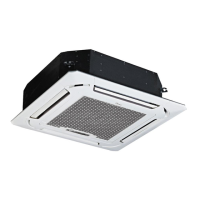Safety
Precautions
Page 6
• Empty recovery cylinders are evacuated and, if
possible, cooled before recovery occurs.
• The recovery equipment shall be in good working
order with a set of instructions concerning the
equipment that is at hand and shall be suitable for the
recovery of flammable refrigerants. In addition, a set
of calibrated weighing scales shall be available and in
good working order.
• Hoses shall be complete with leak-free disconnect
couplings and in good condition. Before using the
recovery machine, check that it is in satisfactory
working order, has been properly maintained and that
any associated electrical components are sealed to
prevent ignition in the event of a refrigerant release.
Consult manufacturer if in doubt.
• The recovered refrigerant shall be returned to the
refrigerant supplier in the correct recovery cylinder,
and the relevant Waste Transfer Note arranged. Do
not mix refrigerants in recovery units and especially
not in cylinders.
• If compressors or compressor oils are to be removed,
ensure that they have been evacuated to an
acceptable level to make certain that flammable
refrigerant does not remain within the lubricant.
The evacuation process shall be carried out prior to
returning the compressor to the suppliers. Only electric
heating to the compressor body shall be employed
to accelerate this process. When oil is drained from a
system, it shall be carried out safely.
2.20 Venting of HC Refrigerant (R290)
Venting may be carried out as an alternative to recovering
the refrigerant. Because HC refrigerants have no ODP and
negligible GWP, under certain circumstances it may be
considered acceptable to vent the refrigerant. However, if
this is to be considered, it should be done in accordance
with the relevant national rules or regulations, if they
permit.
In particular, before venting a system, it would be
necessary to:
• Ensure that legislation relating to waste material has
been considered
• Ensure that environmental legislation has been
considered
• Ensure that legislation addressing safety of hazardous
substances is satisfied
• Venting is only carried out with systems that contain a
small quantity of refrigerant, typically less than 500 g.
• Venting to inside a building is not permissible under
any circumstances
• Venting must not be to a public area, or where people
are unaware of the procedure taking place
• The hose must be of sufficient length and diameter
such that it will extend to at least 3 m beyond the
outside of the building
• The venting should only take place on the certainty
that the refrigerant will not get blown back into any
adjacent buildings, and that it will not migrate to a
location below ground level
• The hose is made of material that is compatible for use
with HC refrigerants and oil
• A device is used to raise the hose discharge at least
1 m above ground level and so that the discharge
is pointed in an upwards direction (to assist with
dilution)
• The end of the hose can now discharge and disperse
the flammable fumes into the ambient air.
• There should not be any restriction or sharp bends
within the vent-line which will hinder the ease of flow.
• There must be no sources of ignition near the hose
discharge
• The hose should be regularly checked to ensure that
there are no holes or kinks in it, that could lead to
leakage or blocking of the passage of flow
When carrying out the venting, the flow of refrigerant
should be metered using manifold gauges to a low flow
rate, so as to ensure the refrigerant is well diluted. Once
the refrigerant has ceased flowing, if possible, the system
should be flushed out with OFN; if not, then the system
should be pressurised with OFN and the venting procedure
carried out two or more times, to ensure that there is
minimal HC refrigerant remaining inside the system.

